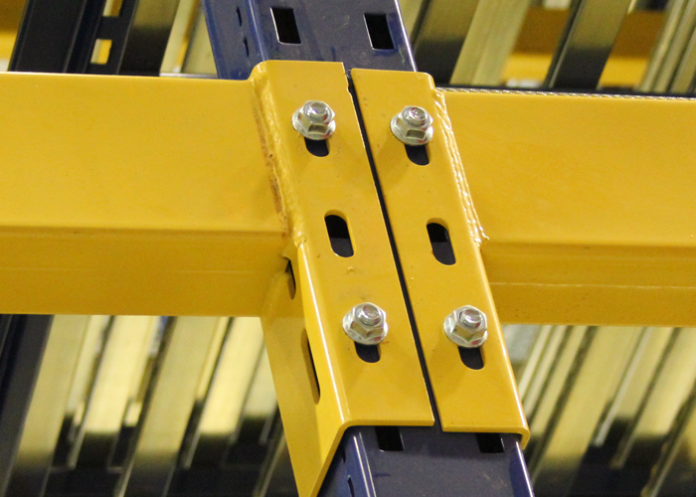UNARCO offers a variety of optional rack styles to satisfy a large variation of storage rack project requirements. The two most common types of rack are:
1.) Cold-formed storage rack (generally with boltless connections)
2.) Hot-rolled structural rack (generally with bolted connections)
There is another option offered by UNARCO that is really the best of both worlds, cold-formed T-Bolt rack, which uses a 2-bolt connector. It has the benefits and equal strength of the structural bolted connector with the economy and paint aesthetics of cold-formed rack.
Probably the two biggest arguments that customers will raise against bolted connectors are:
1.) Higher initial installation cost
2.) Having to use tools to remove a beam
There are some important things to consider regarding the first argument. First, most racks are only installed one time, but the rack has to function for the life of the structure. The bolts on the bolted connector need to be properly tightened but require no auxiliary beam locking devices that can become non-functional or broken, requiring the whole beam to be replaced. The bolts are far stronger than the locking devices provided on boltless beams. Bolted connectors provide a clamping force between the face of the column and the inside face of the connector that adds rigidity and structural resistance. This type of clamping pressure is not present for many boltless connectors commonly found on interchangeable pallet rack.
Moving a beam that is boltless may require blows with a hammer while holding the lock due to settling of the floor and the pallet rack system. Boltless rack connectors often require special care or visual inspection to be sure that pins are properly engaged and the connectors are properly seated. A boltless beam can appear to be properly installed, but have pins that are not really engaged in the column holes, which could result in the beam becoming disengaged and dropping a pallet.
Another advantage of bolted racks is that the installer can achieve a more plumb installation. If there are any irregularities (rack or floor), the pins are less forgiving and the proper seating of boltless connectors can cause twist in the assembly that is hard to remedy in the field. There is more flexibility for plumbing the rack with a bolted connection.
The need for tools should not be a huge concern because the ½” diameter bolt requires a ¾” wrench, readily available, as it is the size of a car lug nut. Many other components of the rack system such as back connectors, crossbars, anchors, etc. require additional tools to be present on-site.
The 2-bolt T-Bolt connection for a rack beam allows the customer to gain all of the benefits of the rigid structural bolted rack connection without having to accept some of the disadvantages of buying structural rack. Photos of the 2-bolt T-Bolt connections can be found on UNARCO’s website: http://www.unarcorack.com/photos/pallet-rack-photos/
Note: UNARCO manufactures the single-bolt (bolt-tab) T-Bolt connector for light or very short applications, but recommends the 2-bolt connectors for fork-truck pallet racks of medium height (greater than twelve feet) or taller.
